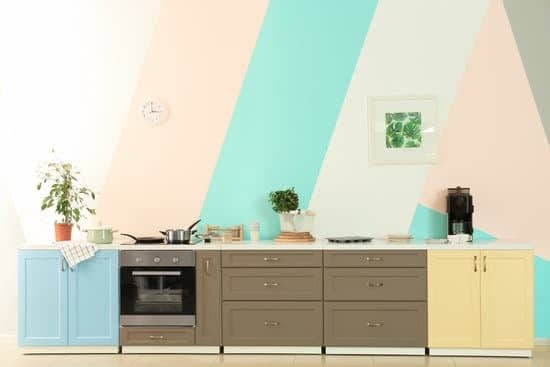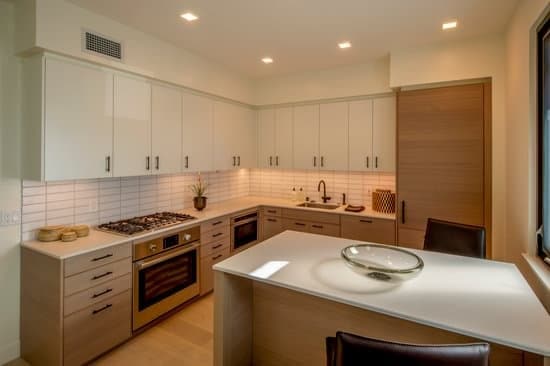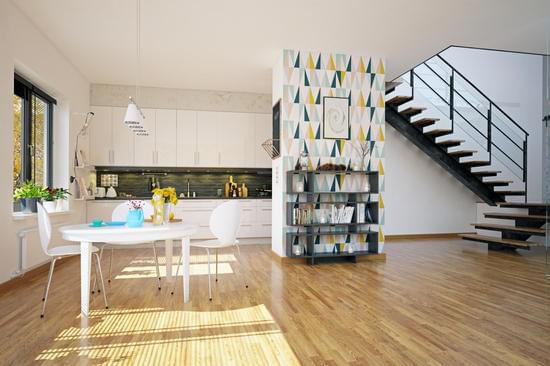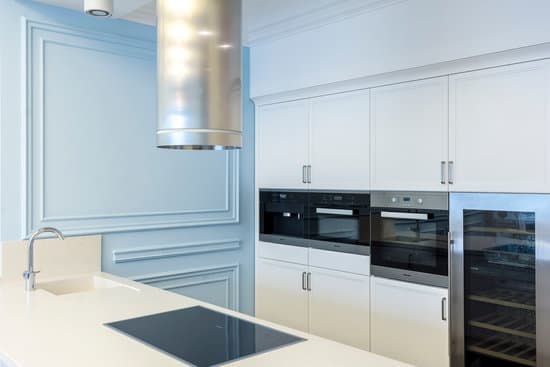Are you looking for ways to divide your kitchen and living room? Creating separate spaces can help improve functionality and privacy in your home. In this article, we will explore various methods to achieve this. From utilizing room dividers and screens to incorporating half walls or partitions, there are plenty of options available. We will also discuss using furniture arrangement, sliding or barn doors, as well as different flooring or wall treatments. Let’s dive in and transform your open floor plan into distinct areas that meet all your needs!
Utilizing Room Dividers and Screens
If you’re looking to create separate areas in your open-concept living space, consider utilizing room dividers or screens. Choosing the right room divider for your space is crucial in achieving the desired functionality and privacy. Look for dividers that are sturdy and tall enough to create a visual separation between the kitchen and living room. Screens can also be used to divide the space effectively while adding a touch of style. Additionally, screens can be easily moved or folded when not in use, providing flexibility. Another option is using curtains as room dividers, which allow you to maximize privacy without completely blocking off natural light. Curtains can be hung from ceiling tracks or rods, allowing for easy opening and closing when needed. By incorporating these solutions, you can achieve both privacy and functionality in your open-concept living space while keeping safety in mind.
Creating a Visual Divide with Furniture Arrangement
To visually separate the kitchen and living area, you can achieve this by strategically arranging furniture. This not only creates a clear visual divide but also adds functionality to your space. One option is to use decorative curtains as a visual divide. Hang them from the ceiling or attach them to tension rods for an easy installation. These curtains can be opened or closed as needed, allowing for flexibility in privacy and sunlight control.
Another idea is to incorporate a bookshelf as a room divider. Choose a bookshelf with an open design that allows light to pass through while still providing separation between the two areas. You can arrange books, plants, or decorative items on the shelves to add style and personality to both spaces.
By using these furniture arrangements, you can create a visually appealing division between your kitchen and living room while maintaining safety and functionality in your home.
Incorporating a Half Wall or Partition
Incorporating a half wall or partition can provide a clear separation between the kitchen and living area, ensuring safety in your home. When considering partition design, it is important to keep in mind the overall aesthetics of your space. Opt for a design that complements the existing decor and enhances the open concept layout. A popular option is using glass partitions, which allow natural light to flow through while still creating a visual divide. Another choice could be a half wall with shelves, providing storage space and acting as a functional divider. Safety should always be prioritized when installing any type of partition; ensure that it is securely anchored to prevent accidents. By incorporating a well-designed half wall or partition, you can achieve both functionality and aesthetic appeal in dividing your kitchen and living room areas.
Adding a Sliding or Barn Door
Consider adding a sliding or barn door to create a stylish and functional separation between your kitchen and living areas. Here are some reasons why this could be a great option for you:
- Versatility: Sliding or barn doors come in various styles, materials, and sizes, allowing you to find the perfect fit for your space.
- Space-saving: These doors slide along a track instead of swinging open, saving valuable floor space in both rooms.
- Privacy: If you desire privacy while cooking or entertaining guests, a sliding or barn door can easily provide that separation.
- Safety: When choosing the right hardware for your door, make sure it is sturdy and secure to prevent accidents.
When installing a sliding or barn door in a shared space, keep these tips in mind:
- Measure carefully to ensure the door fits properly.
- Use quality hardware to prevent any potential issues with the door’s functionality.
- Consider using frosted glass panels if you want light to pass through while still maintaining privacy.
- Seek professional help if needed to ensure proper installation and safety precautions are followed.
Using Different Flooring or Wall Treatments
Using different flooring or wall treatments can add visual interest and create a distinct separation between the kitchen and living areas. This not only enhances the overall aesthetics of your space but also ensures safety for you and your family. When choosing different flooring options, consider using materials that are durable, easy to clean, and suitable for both areas. For example, you could opt for hardwood floors in the living room and ceramic tiles in the kitchen. To achieve a seamless transition between these two spaces, use complementary wall treatments such as paint colors or wallpaper patterns that coordinate with each other. By incorporating these design elements, you can effectively divide your kitchen and living room while maintaining a cohesive look throughout your home.
Conclusion
In conclusion, dividing your kitchen and living room can be achieved through various methods. By utilizing room dividers and screens, you can create a separate space while still maintaining an open feel. Furniture arrangement can also help visually divide the two areas, allowing each to have its own designated space. Incorporating a half wall or partition provides a more permanent solution, while adding a sliding or barn door offers flexibility and style. Lastly, using different flooring or wall treatments can further enhance the separation between the kitchen and living room.







